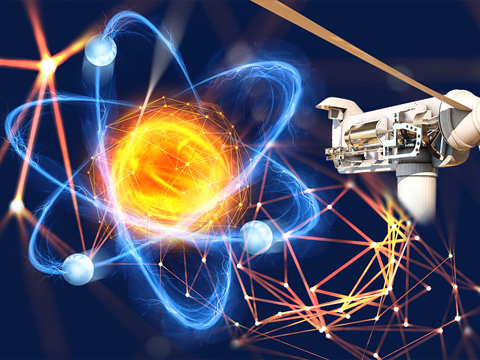One Big Beautiful Bill passed by US Congress
How H.R.1 Reshapes Energy, Minerals, and Climate Policy
04 July 2025
One Big Beautiful Bill (OBBB) passed by US Congress
The House of Representatives has passed the Senate version of the OBBB in a final vote that was largely along party lines, with 218 votes in favour and 214 against, thereby enabling the legislation to proceed to the President’s desk for signature.
The spending bill advanced by President Trump seeks to reduce taxes for ordinary citizens, lower Medicaid expenditure by restricting access for undocumented migrants, pursue energy independence, expand deportation of illegal immigrants, and significantly increase defence spending. Specifically, the military budget will rise by an additional 150 billion US dollars, representing a 13 per cent increase and bringing total defence funding to 1.01 trillion US dollars for the 2026 financial year.
This 940-page legislative “beast” raises fundamental questions: what will it mean for mining, energy, mobility, and climate policy? Below is our initial review of provisions in H.R. 1 (119th Congress) – the “One Big Beautiful Bill Act” – covering mining, critical minerals, strategic commodities, energy policy (fossil fuels and renewables), battery production, electric vehicles, and related tax and trade changes. Each item lists the official section reference and a plain-language explanation of its content and impact, based strictly on the bill’s text.
1. Mining and Mineral Extraction
-
Sec. 50201 – Coal Leasing: Directs the Department of the Interior to promptly process pending coal lease applications. Within 90 days of enactment, the Secretary must resume federal coal leasing by publishing any needed NEPA reviews, conducting lease sales, and issuing leases for all “qualified” pending applications. This effectively lifts any pause on federal coal leasing and fast-tracks new coal mine leases on Bureau of Land Management lands.
-
Sec. 50202 – Coal Royalty Rate: Temporarily cuts the federal royalty rate on coal production from 12.5% to a maximum of 7% through FY2034. This reduction applies to existing and future federal coal leases, and the bill even provides credits to lessees who prepaid royalties at the higher rate. The measure lowers costs for coal mining companies on federal land for the next decade.
-
Sec. 50203 – Leases for Known Recoverable Coal: Mandates a major expansion of federal coal leasing. The Interior Secretary must, within 90 days, make at least 4,000,000 acres of federal land available for new coal leases. This applies to known coal-rich lands in the contiguous 48 states and Alaska, excluding protected areas like national parks, wilderness, monuments, etc.. It significantly enlarges the area open to coal mining.
-
Sec. 50204 – Authorization to Mine Federal Coal (Adjacent Lands): Automatically authorizes mining of federal coal seams that are adjacent to existing mines on non-federal land, if needed to access the non-federal coal. Within 90 days, Interior must allow mining of such federal tracts (previously included in an approved mining plan) without significant modifications. In practice, this lets operators of state or private coal mines cut across small federal parcels to reach more coal, overriding prior barriers.
2. Critical Minerals and Critical Raw Materials
-
Sec. 20004 – Defense Industrial Base Funding for Critical Minerals: Provides a major boost to domestic critical mineral capability via the Department of Defense. It allocates $2.0 billion for the National Defense Stockpile to acquire strategic and critical minerals (under 50 U.S.C. §98 et seq.). It also appropriates $5.0 billion to DOD’s Industrial Base Fund for investments in critical mineral supply chains, and $500 million to a DOD critical minerals loan program, supporting up to $100 billion in project loans and guarantees. These funds are aimed at expanding U.S. production, refining, and stockpiling of critical minerals (like rare earth elements, lithium, cobalt, etc.) considered essential for defense and technology.
-
Sec. 70514 – Phase-Out of Advanced Manufacturing Credit for Critical Minerals: This section modifies the §45X Advanced Manufacturing Production Credit (created by the 2022 IRA) that incentivizes U.S.-produced clean energy components and critical minerals. It accelerates the credit’s sunset for critical minerals: any “applicable critical mineral” (e.g. lithium, nickel, cobalt, graphite, rare earths) produced after 2030 will see its credit amount phased down by 25% each year and zeroed out after 2033. In other words, the 10% credit for critical minerals will fully terminate by 2034, shortening the subsidy timeline. The bill also adds “metallurgical coal” to the list of critical minerals eligible for the §45X credit (as recently designated by DOE), treating steelmaking coal as a strategic material for credit purposes.
-
Foreign Entity Restrictions (Various Sections): H.R.1 imposes new limits to exclude China and other adversaries from critical mineral supply chains. For instance, under Sec. 70514, any component will not qualify for the §45X credit if any “material assistance” in producing it came from a “prohibited foreign entity.” This effectively disqualifies products with significant Chinese content or involvement. Similarly, companies defined as “foreign-influenced entities” or foreign state-owned enterprises are barred from claiming the credit. These provisions ensure that the benefits for critical mineral production go only to U.S. or allied firms and not to entities under China’s control.
-
(Additional context: The bill does not create new environmental permitting provisions for mining on public lands beyond the coal leasing above. Its focus for critical minerals is on funding and tax measures to spur domestic production and reduce foreign dependence.)
3. Strategic Commodities
(Materials for Energy & National Security)
-
Sec. 50401 – Strategic Petroleum Reserve (SPR) Refill and Maintenance: Strengthens the U.S. oil stockpile. It appropriates $218 million for maintenance and repairs of SPR facilities and $171 million to purchase oil to refill the Strategic Petroleum Reserve. Additionally, it repeals a mandate for future drawdowns/sales of SPR oil that was enacted in 2017 (which had scheduled sale of millions of barrels). This signals a policy of refilling and preserving the SPR as a strategic asset, rather than using it for budget offsets.
-
Sec. 50104 – Alaska Oil and Gas Leasing (Arctic National Wildlife Refuge): Amplifies oil development in the ANWR “1002 area.” The 2017 tax law authorized two lease sales there; H.R.1 now requires four more oil & gas lease sales in ANWR within 10 years. It essentially mandates ongoing lease sales in the refuge beyond the initial ones, aiming to accelerate exploration in this strategic petroleum reserve area in Alaska. (This counters recent executive actions that stalled ANWR leasing.)
-
Sec. 50105 – National Petroleum Reserve–Alaska (NPR-A): Commands aggressive leasing in the NPR-A, a vast federal oil reserve on the North Slope. Interior must hold at least five oil and gas lease sales in NPR-A within 10 years, each offering a minimum of 4 million acres. It also directs prompt resumption of any halted NPR-A leasing program. This will open large new areas in Alaska to drilling, bolstering long-term domestic oil supply (viewed as a strategic commodity for energy security).
-
Radiation Exposure Compensation Act Extensions (Secs. 100201–100205): These sections acknowledge uranium as a strategic mineral (vital for nuclear weapons and energy) by extending and expanding compensation for people harmed during past uranium mining and nuclear weapons development:
-
Sec. 100201 – Extension of RECA Fund: Keeps the Radiation Exposure Compensation Trust Fund open through December 31, 2028 (it was set to expire in 2024). This allows continued payouts to eligible individuals (often veterans, miners, and “downwinders” exposed to radiation during Cold War programs).
-
Sec. 100203 – Uranium Mining Claims: Expands eligibility for compensation to additional uranium industry workers. It broadens the covered time frame and geography – including uranium miners, millers, ore transporters and core drillers who worked in additional states (CO, NM, AZ, WY, SD, WA, etc.) up through 1990 (previously only certain states through 1971). It also adds new compensable illnesses (e.g. renal cancer and chronic kidney disease, not just lung ailments) for those workers. In short, more uranium miners and related workers harmed by radiation will qualify for $100,000 compensation awards.
-
Sec. 100204 – Manhattan Project Waste Claims: Establishes compensation for individuals exposed to radiation from Manhattan Project nuclear waste storage or disposal sites. If a person lived for 2+ years (after 1949) in specified contaminated areas (e.g. downwind of sites in states like New Mexico) and developed certain cancers, they can receive an award. This recognizes legacy nuclear materials as a strategic issue and provides redress for those affected by the U.S. weapons program.
-
(These provisions don’t directly affect current mining or production, but they underscore the bill’s treatment of uranium and nuclear materials as strategic commodities, addressing the human costs of mobilizing those materials for national defense.)
-
4. Energy Policy – Fossil Fuels vs. Renewables
-
Sec. 50101 – Onshore Oil and Gas Leasing on Federal Lands: H.R.1 prioritizes fossil fuel development on public lands. It mandates quarterly lease sales for oil and gas onshore: each fiscal year, at least 4 lease sales in each of nine major oil/gas states (Wyoming, New Mexico, Colorado, Utah, Montana, North Dakota, Oklahoma, Nevada, and Alaska). In these sales, the Secretary of the Interior must offer at least 50% of all nominated parcels that are eligible for leasing (preventing agencies from slow-walking or blocking offered tracts). It also amends the Mineral Leasing Act to require that any eligible parcel nominated for leasing be put up for auction within 18 months. Additionally, any approved drilling permit must be acted on within 4 years or it expires. Overall this section ends the de facto moratorium on federal land leasing, expediting permits and ensuring regular oil & gas auctions.
-
Sec. 50102 – Offshore Oil and Gas Leasing: Dramatically expands offshore drilling opportunities:
-
Gulf of Mexico: Overrides the Administration’s current leasing plan by requiring at least 30 region-wide oil & gas lease sales in the Gulf of Mexico from 2025–2039. This translates to a minimum of two Gulf lease auctions every year through 2039 (with a schedule set for at least one by mid-March and one by end of year each year). It prevents lengthy gaps between sales and nullifies any plan that schedules fewer sales.
-
Alaska Offshore (Cook Inlet): Similarly, mandates 6 lease sales in Cook Inlet (Alaska) by 2028 (roughly one per year for the next several years), reviving leasing in that basin.
-
Lease Terms: The bill standardizes lease terms and conditions to those that applied under the last lease sale notices. It also sets offshore royalty rates between 12.5% and 16.67% (no higher) to encourage bidding.
-
These requirements force the Interior Dept. to significantly increase offshore oil & gas offerings, ensuring continuous opportunities for drilling on the Outer Continental Shelf, especially in the Gulf (a core U.S. oil-producing region).
-
-
Sec. 50103 – Royalties on Extracted Methane: Repeals a recent policy that penalized methane emissions. Specifically, it repeals Section 50263 of the Inflation Reduction Act, which had imposed federal royalty payments on wasted gas (methane) from oil and gas operations. By striking this provision, H.R.1 eliminates the requirement that producers pay royalties on flared or vented natural gas from federal leases. This reduces costs for operators and removes a climate-driven fee, aligning with the bill’s fossil-fuel-friendly approach.
-
Sec. 50402 – Repeals and Rescissions of Clean Energy Programs: H.R.1 rolls back several programs from the 2022 IRA:
-
IRA §50142 Repealed: This was a $3 billion DOE program for grants and loans to expand domestic manufacturing of fuel-efficient vehicles (including EVs). H.R.1 explicitly repeals that section and rescinds any unobligated funds, halting the program to build out EV manufacturing capacity.
-
Rescission of DOE Climate Funds: It also rescinds remaining funds from a number of IRA energy initiatives, including (as listed in Sec. 50402(b)) programs like the Advanced Industrial Facilities deployment program (grants for emissions-cutting industrial projects, IRA §50153), the Electric Transmission Facilitation Program (IRA §50151), and others. In short, unspent money for clean energy technology deployment is clawed back into the Treasury.
-
The effect is to defund many of the IRA’s clean energy investment programs, reflecting a shift away from government support for decarbonization projects.
-
-
Sec. 60001–60026 – Repeal or Defund Environmental and Climate Programs: Title VI of H.R.1, from the Senate EPW Committee, systematically rescinds funding for dozens of climate, air quality, and environmental initiatives (mostly created or expanded by the IRA and recent appropriations). For example:
-
Sec. 60001 rescinds all unobligated funds for the Clean Heavy-Duty Vehicles program (which was funding electric and low-emission school buses and trucks).
-
Sec. 60002 repeals the Greenhouse Gas Reduction Fund (the $27B “green bank” for clean energy investment in states) entirely.
-
Sec. 60003–60006 pull back funding for EPA air pollution and emissions reduction grants (such as diesel emissions reduction, air quality monitoring, and environmental justice block grants).
-
Sec. 60012 rescinds the Methane Emissions Reduction Program funds for oil and gas systems (this was a pot of incentives to cut methane leaks).
-
Many other sections (60007–60011, 60013–60018, etc.) eliminate funds for EPA climate monitoring, low-emissions electricity programs, methane waste mitigation, climate justice and resiliency programs, and even non-climate items like Sec. 60025, which rescinds a recent infrastructure grant to the JFK Center.
-
Summary: H.R.1 essentially guts new EPA and Interior climate initiatives, reverting policy to prior status quo and freeing up those monies. The bill frames this as ending “Green New Deal” spending, shifting focus back to traditional infrastructure and energy.
-
-
Sec. 50403 – “Energy Dominance Financing”: Amends the Department of Energy’s loan guarantee authority to broaden project eligibility. It modifies Section 1706 of the Energy Policy Act of 2005 (a program added by IRA for energy infrastructure reinvestment) to ensure DOE can guarantee loans for projects that “increase capacity or output” or provide dispatchable electricity for grid reliability. It removes earlier language that focused solely on avoiding greenhouse gas emissions. The changes also eliminate and streamline certain review requirements:
-
The subsection requiring credit subsidy appropriations for Section 1706 loans is struck (allowing use of already appropriated funds more freely).
-
In short, this section repurposes the DOE loan program toward “all-of-the-above” energy projects (including upgrades or life-extensions of fossil fuel facilities) that improve supply reliability, not just those that cut emissions. It is part of the bill’s theme of “energy dominance,” meaning maximizing domestic energy production capacity.
-
-
Termination of Renewable Energy Tax Incentives (Sec. 70505–70515): H.R.1 would nullify or phase out many clean energy tax credits that were expanded or created by the IRA:
-
Sec. 70505 & 70508: End the Energy Efficient Home Improvement Credit (§25C) and the New Energy Efficient Home Credit (§45L) after 2024. These provided credits for home insulation, efficient windows/doors, and efficient new construction – they are terminated, removing homeowner/builders’ incentives.
-
Sec. 70506: Repeals the Residential Clean Energy Credit (§25D) for solar panels, solar water heaters, small wind, etc. (30% tax credit for home installations) for expenses after enactment. This would stop the current 30% solar tax credit earlier than its planned phase-down.
-
Sec. 70507: Repeals the Energy Efficient Commercial Buildings Deduction (§179D) after 2024, which means commercial building owners would no longer get deductions for energy-saving investments.
-
Sec. 70510: Modifies the Zero-Emission Nuclear Production Credit (§45U) – likely ending it early or limiting its scope (the text indicates a “modification” to that credit, which in IRA gave existing nuclear plants a $15/MWh credit). The exact change isn’t fully described in our excerpt, but the section title suggests reducing or sunsetting that subsidy.
-
Sec. 70511: Ends the Clean Hydrogen Production Credit (§45V) for hydrogen made from low-carbon processes. This credit (up to $3/kg) would be terminated for hydrogen produced after a certain date (likely end of 2024).
-
Sec. 70512 & 70513: Terminate the new Clean Electricity Production Credit (§45Y) and Investment Credit (§48E) before they even fully take effect. These technology-neutral credits for power plants were to start in 2025; H.R.1 cancels them (and imposes “restrictions” on any interim use). Essentially, future wind, solar, geothermal, or other clean power projects would not receive the planned IRA tax credits.
-
Sec. 70514: Phases out the Advanced Manufacturing Production Credit (§45X) as detailed in Category 5 (affecting solar panel, wind turbine, battery, and critical mineral production credits).
-
Sec. 70515: Blocks any expansion of the Advanced Energy Project Credit (§48C) beyond its current funding. (IRA had authorized more allocation for §48C, a competitive credit for clean energy manufacturing projects; H.R.1 likely prevents DOE from allocating new credits beyond what’s already awarded.)
-
Net effect: The bill dismantles key federal incentives for renewable energy and efficiency, hastening their expiration. By ending these credits, H.R.1 would raise the effective cost of solar, wind, hydrogen, nuclear, and efficiency projects, reversing much of the IRA’s climate-related tax policy.
-
-
Sec. 70521 – Clean Fuel Production Credit (CFPC) Extension and Reforms: A nuanced provision that both extends and tweaks the §45Z credit for low-carbon transportation fuels:
-
Extension: It pushes the credit’s sunset from end of 2027 to end of 2029, giving biofuel producers two extra years of eligibility.
-
North America Feedstock Requirement: It adds a rule that to get the credit, the fuel must be made exclusively from feedstocks produced in the United States, Canada, or Mexico. This prevents, for example, claiming the credit for fuel made from palm oil or other imported feedstocks – supporting domestic agriculture (like U.S. corn or soybean for biofuels).
-
No “Negative Emissions” Credits: The IRA’s framework allowed certain fuels (like those using captured CO₂ or manure gas) to claim a negative lifecycle emission rate, potentially increasing credit value. H.R.1 prohibits treating any fuel’s emissions rate as below zero. Exception: It specifically allows the IRS to set distinct (and potentially below-zero) emissions rates for fuels made from animal manure feedstocks. In essence, most fuels cannot claim climate benefits beyond carbon-neutral, but biogas-derived fuels could still get credit for methane reduction.
-
Ignore Indirect Land Use Change: The bill instructs that lifecycle emissions calculations must exclude emissions from indirect land-use changes. This favors crop-based biofuels by not penalizing them for things like deforestation or crop displacement impacts.
-
Prevent Double Dipping: An anti-“double credit” clause ensures a gallon of fuel can’t earn both the §45Z clean fuel credit and, say, the blender’s tax credit for sustainable aviation fuel. If a fuel producer claims §45Z, that fuel is ineligible for the separate $1.25 SAF blender credit. It also bars claiming §45Z for any fuel that was produced from another fuel which itself received §45Z (closing a potential loophole of iterative credit claims).
-
SAF Credit Rate Removal: H.R.1 removes the special rate for Sustainable Aviation Fuel under §45Z. It deletes the extra 35¢/gal bonus that IRA gave to SAF and simply defines SAF as a jet fuel meeting certain ASTM standards and not derived from palm oil. Going forward, SAF would just get the normal clean fuel credit rate (which maxes out at $1.00 per gallon for zero-carbon fuel), leveling it with other fuels.
-
Impact: These changes reflect a compromise approach – prolonging support for biofuels (especially domestic corn ethanol, biodiesel, renewable diesel, biogas fuels), but tightening the rules to ensure U.S. farmers benefit and remove what some view as over-generous aspects (no credit for hypothetical negative emissions or foreign inputs). It also simplifies and slightly lowers the incentive for aviation biofuels.
-
-
Sec. 70522 – Carbon Oxide Sequestration Credit (45Q) Restrictions: Modifies the 45Q tax credit for carbon capture projects:
-
No Credit for Chinese-Funded Projects: Echoing other sections, it adds a prohibition on claiming 45Q if the taxpayer is a “specified foreign entity” or a “foreign-influenced entity.” In practice, a carbon capture venture that is owned or controlled by, say, a Chinese company or government would not get the credit.
-
Align Credit for EOR and Storage: It restructures the credit to treat different carbon uses more equally. Previously, 45Q gave higher credits for CO₂ permanently sequestered in saline formations and a lower credit for CO₂ injected for Enhanced Oil Recovery (EOR). H.R.1 amends 45Q so that as long as the CO₂ used in EOR is securely stored underground afterward, it is categorized similarly to straight geological storage. Essentially, CO₂ used for tertiary oil recovery and then stored will count the same as CO₂ directly stored, removing disincentives to EOR.
-
Lowering Credit Values: The bill slashes the dollar amounts of the 45Q credit for new projects. It sets the base credit at $17 per ton of CO₂ captured (indexed for inflation) for industrial facilities, whereas under current law it would reach $85 by 2026. It appears to maintain a higher tier for direct air capture projects at $36 per ton (instead of $180 under IRA). By striking certain subparagraphs and renumbering, it removes the future $85/$60/$180 credit figures and replaces them with a unified lower credit. This represents a significant reduction in incentive for carbon capture initiatives.
-
Effective Dates: The foreign entity ban applies immediately, while the credit value and structural changes apply to facilities placed in service after enactment. In sum, H.R.1 keeps 45Q in place but at a much less generous level and targets it to genuinely stored CO₂, while preventing China-owned firms from benefiting.
-
5. Battery Manufacturing and Battery Supply Chains
-
Sec. 70514(a) – Domestic Content Rules for Battery Components: Amends the advanced manufacturing production credit (§45X) to encourage U.S. supply sourcing within the battery production process. Under a new provision, if a manufacturer produces an “eligible component” (e.g. a battery cell) that is then immediately integrated into a higher-value component (e.g. an EV battery module) in the same facility, they can still claim the credit for the lower-tier component only if at least 65% of the direct material costs of that final component are attributable to U.S.-produced primary components. In plain terms, a company can’t double-dip by assembling battery cells into a pack on-site unless most of that pack’s parts were made in America. This prevents companies from importing sub-components (anodes, cathodes, etc.), assembling them into a module domestically, and claiming credits on both – instead, it incentivizes using U.S.-made materials in each stage of battery manufacturing.
-
Sec. 70514(d) – Expanded Definition of “Battery Module”: Modifies §45X’s definitions to ensure more comprehensive coverage of battery assembly. It adds that a “battery module” includes all essential equipment needed for battery functionality, such as current collector assemblies and voltage sensing harnesses. This clarification means those components are counted as part of the module and likely eligible for the production credit. It addresses ambiguity to make sure crucial battery pack parts are covered, which helps battery producers maximize credits for making not just the cells, but the integration hardware as well, on U.S. soil.
-
Sec. 70514(b) – Phase-Out of Credits for Critical Minerals in Batteries: As noted in Category 2, H.R.1 will sunset the §45X credit for critical minerals and other inputs earlier. For battery supply chains, this means the credit for producing critical battery minerals (lithium, graphite, etc.) or electrode materials in the U.S. will begin phasing out in 2031 and end completely after 2033. So while the IRA envisioned a longer-term support for domestic battery mineral production, H.R.1 shortens that window, presumably expecting the industry to stand on its own by the 2030s or shifting focus to immediate development.
-
Sec. 70514(c) – Excluding Chinese Inputs and Entities: The bill imposes strict “China guardrails” on battery supply chain credits:
-
No credit for components with foreign “material assistance”: If any eligible component (like a battery cell) includes inputs or support from a “prohibited foreign entity” (a term defined to include entities under the influence of countries like China, Russia, North Korea, Iran), it cannot receive the §45X credit as of enactment. This directly targets Chinese battery materials or technology – for example, a battery cathode made with Chinese-refined lithium or Chinese machinery might disqualify the credit.
-
No credit for foreign-owned manufacturers: Likewise, if the manufacturer itself is a “foreign-influenced entity” (which generally means a company owned >50% or controlled by foreign entities, or meeting certain foreign ownership thresholds defined in tax law), it cannot claim the credit at all. This provision is aimed at Chinese battery firms operating in the U.S. via subsidiaries – they would be barred from U.S. production credits.
-
These rules reinforce a key theme: the bill channels benefits to American/allied companies and excludes Chinese participation in the battery manufacturing incentives. It aligns with the broader strategy of securing battery supply chains for national security and industrial base reasons.
-
-
Net Impact on Battery Supply Chain: H.R.1’s battery-related provisions seek to bolster fully domestic battery manufacturing. They encourage using American-made components at every stage (via the 65% rule), clarify that more battery pack parts qualify for support, but simultaneously limit the duration of credits and cut out adversary involvement. In the short term, this could accelerate U.S. investment in battery material and component plants (to meet the content rules), but in the long term the available tax credits for battery production would taper off sooner than under current law.
6. Electric Vehicles (EVs) – Manufacturing, Purchase Credits, Supply Chain
H.R.1 takes a sharp turn from prior policy by removing or reducing support for electric vehicles on multiple fronts:
-
Sec. 70501 – Termination of Used Clean Vehicle Credit: Repeals the “previously-owned clean vehicle” tax credit (IRC §25E). This was a credit of up to $4,000 for low/middle-income consumers buying a used EV or fuel-cell vehicle. H.R.1 strikes this starting in 2025 (the provision takes effect for tax years after Dec 31, 2024). This means no federal credit would be available for used EV purchases going forward.
-
Sec. 70502 – Termination of New EV Tax Credit: Abolishes the Clean Vehicle Credit for new EVs (IRC §30D). This is the well-known $7,500 credit for qualifying new electric cars and trucks. H.R.1 would end the §30D credit entirely (for vehicles placed in service after a certain cutoff, likely after 2024). This is a significant policy reversal – effectively removing the federal subsidy that has helped drive EV adoption for over a decade.
-
Sec. 70503 – Termination of Commercial EV Credit: Repeals the tax credit for commercial clean vehicles (IRC §45W), which was created to incentivize businesses to buy electric delivery trucks, vans, buses, etc. The credit (up to $7,500 for light vehicles or $40,000 for heavy trucks) would be eliminated for vehicles acquired after the effective date. Without §45W, fleets and companies would no longer get federal support for electrifying their vehicle stock.
-
Sec. 70504 – Termination of Alternative Fuel Refueling Property Credit: Eliminates the 30% tax credit for EV charging infrastructure and other alternative fuel refueling property (IRC §30C). This credit (capped at $100k per charger) was incentivizing buildout of EV charging stations (and CNG/LPG fueling). H.R.1 revokes it, so businesses or individuals installing charging equipment would no longer receive a federal tax break.
-
Rescinding EV Manufacturing and Deployment Funds:
-
DOE Advanced Technology Vehicle Manufacturing (ATVM) Program: In Sec. 50402(a), the bill repeals IRA Section 50142 and rescinds its funds. IRA §50142 had provided $3 billion to support DOE loans for factories building clean vehicles (like EVs) and their components. By repealing it, H.R.1 effectively kills the expansion of the ATVM loan program that was meant to jump-start new EV assembly plants, battery plants, etc.
-
EPA Clean Heavy-Duty Vehicles: Sec. 60001 claws back any remaining money for the EPA’s clean heavy-duty vehicle grant program (which was funding replacement of diesel trucks with EVs or other zero-emission vehicles). It rescinds all unobligated balances for that program. This stops grants that would help school districts buy electric school buses or help transit agencies and trucking firms go electric.
-
-
Other Auto-Related Provision (Tax Side): Not directly an EV program, but worth noting: H.R.1 includes a “No Tax on Car Loan Interest” provision (Sec. 70203) that temporarily allows individuals to deduct interest on auto loans for personal vehicles. This would apply 2025–2028 and covers interest on loans for new or used vehicles (up to certain price caps, excluding luxury cars). While this is technology-neutral (applies to any car), it could marginally help EV buyers as well by letting them deduct interest on an EV loan (if the EV credits are gone, this is a small offset). However, it’s broadly aimed at making car ownership slightly more affordable for middle-class taxpayers and is not specific to clean vehicles.
-
Summary of EV Impacts: H.R.1 would withdraw nearly all federal support for electric vehicles. Purchase incentives (new, used, and commercial) would vanish, likely raising EV prices relative to combustion vehicles by up to $7,500. Charging infrastructure credits disappear, potentially slowing charger deployment. Support for EV manufacturing is curtailed by repealing loan programs and grants. These changes reflect a policy choice to end subsidies for EV adoption and let the market (or state policies) drive EV growth. It’s a stark contrast to the previous Congress’s approach, indicating a strategic emphasis on other energy resources and perhaps skepticism about taxpayer-funded electrification.
(It’s worth noting H.R.1 does not ban EVs or anything of that nature – it simply removes incentives and funding. The bill’s proponents argue this levels the playing field and reduces government spending on favored technologies.)
7. Tax and Trade Policy Changes Related to the Above Areas
Finally, H.R.1 includes several tax code adjustments and a trade rule change that intersect with energy, minerals, and manufacturing:
-
De Minimis Import Rule Reform (Sec. 70531): Targets the loophole in U.S. customs law that allows duty-free import of small-value packages (Section 321 of the Tariff Act, 19 U.S.C. 1321) – often used by e-commerce sellers from China. First, it imposes a new civil penalty up to $5,000 (first offense) or $10,000 (repeat) for anyone who misuses the de minimis shipment privilege to import goods that violate U.S. customs or other laws. This is aimed at curbing abuses like shipping counterfeit or unsafe items in small packages. Secondly, it repeals the “commercial quantity” exception in the de minimis statute effective July 1, 2027. In plainer terms, it likely lowers or removes the $800 de minimis threshold for certain frequent importers or certain goods. This would mean e-commerce retailers (like those shipping direct from Chinese warehouses to U.S. consumers) can no longer avoid tariffs by breaking large orders into many <$800 parcels. The change protects domestic industries (including tech and battery component makers) by making it harder to flood the market with untaxed imports, and is a trade measure geared towards China’s practices.
-
Intangible Drilling Costs and the Corporate AMT (Sec. 70523): Provides a tax break for oil & gas companies in the context of the new 15% corporate alternative minimum tax on book income (enacted in 2022). The bill amends IRC §56A(c) to allow companies to deduct their intangible drilling and development costs (IDCs) when computing adjusted financial statement income for AMT purposes. IDCs (the costs of drilling wells, like labor, site preparation, supplies) are usually expensed for regular tax but might not fully deduct from book income. Without this change, those deductions wouldn’t reduce the new AMT, effectively making oil companies pay AMT on phantom income. H.R.1 fixes that by instructing that book income be reduced by any IDC deductions taken on the tax return. Bottom line: oil and gas producers won’t face the 15% minimum tax due to their use of accelerated drilling write-offs, preserving the incentive to invest in new wells (consistent with the bill’s fossil-friendly stance).
-
Master Limited Partnerships for Clean Energy (Sec. 70524): Expands the types of projects that can use the MLP tax structure (which is taxed as a partnership, avoiding corporate tax). Traditionally limited to fossil fuel activities, IRC §7704(d)(1)(E) is amended so that income from hydrogen production/storage, carbon capture facilities, renewable (clean) electricity generation including advanced nuclear, hydropower, and geothermal counts as “qualifying income” for an MLP. This means companies in those clean energy sectors can organize as publicly traded partnerships (MLPs) just like pipeline or coal companies do, attracting investment via pass-through taxation. It’s a notable support for clean energy infrastructure financing (even as other credits are repealed), putting newer energy projects on equal tax footing with oil & gas pipelines. This could facilitate lower cost of capital for, say, a hydrogen pipeline or a small modular nuclear plant by letting it operate as an MLP.
-
“Foreign Entity of Concern” Exclusions in Tax Credits: As mentioned in categories above, H.R.1 writes into law several provisions to exclude certain foreign entities (notably Chinese, Russian, Iranian, N. Korean) from U.S. tax incentives:
-
For the Advanced Manufacturing Production Credit (§45X), no credit is allowed if the product contains any material contribution from a “prohibited foreign entity”, and no credit if the taxpayer firm is foreign-controlled.
-
For the Carbon Sequestration Credit (§45Q), similarly, a project owned by a “specified foreign entity” or foreign-influenced entity cannot claim the credit.
-
(For the EV credits that are terminated, this issue becomes moot; however, the IRA had imposed its own foreign entity rules for EV battery sourcing which now won’t matter once the credits are gone.)
-
These measures are part of a broader “America First” approach in the tax code – ensuring that tax benefits for energy and manufacturing go to U.S. companies and not to adversary-controlled enterprises. It aligns with emerging consensus on securing supply chains for technologies like batteries, solar panels, and critical minerals by disfavoring China’s involvement.
-
-
Miscellaneous:
-
Temporary SALT cap extension (Sec. 70120), Trump-era individual tax cut extensions (Title VII Subtitle A), etc., are in the bill but not directly tied to the energy/mineral focus of this query.
-
One item to note: Sec. 70204 – “Trump Accounts” creates Universal Savings Accounts (nicknamed after the former President). While unrelated to mining or energy, this reflects the bill’s extensive scope including tax reforms beyond our categories.
-
Sec. 70604 – Excise Tax on Remittances: Imposes a new 5% excise tax on certain international money transfers – a revenue measure not specific to energy but part of the package’s offsets.
-
Each of the above provisions comes directly from the official text of H.R.1 (119th Congress). The bill as passed by the House (and amended by the Senate) is a comprehensive reconciliation package touching many policy areas. The items summarized here demonstrate H.R.1’s emphasis on increasing domestic fossil fuel production, accelerating mining for strategic minerals, and rolling back many of the incentives for clean energy and electric vehicles, while also shoring up U.S. industrial competitiveness vis-à-vis foreign rivals through targeted tax and trade measures.
Sources: Text of H.R.1, 119th Congress (2025–2026). (All quotations and references are from the official bill text on Congress.gov.)
United States' international economic, trade, and security alliances




Disclaimer, copyright & intellectual property
SFA (Oxford) Limited has made all reasonable efforts to ensure that the sources of the information provided in this document are reliable and the data reproduced are accurate at the time of writing. The analysis and opinions set out in the document constitute a judgement as of the date of the document and are subject to change without notice. Therefore, SFA cannot warrant the accuracy and completeness of the data and analysis contained in this document. SFA cannot be held responsible for any inadvertent and occasional error or lack of accuracy or correctness. SFA accepts no liability for any direct, special, indirect or consequential losses or damages, or any other losses or damages of whatsoever kind, resulting from whatever cause through the use of or reliance on any information contained in the report. The material contained herewith has no regard to the specific investment objectives, financial situation or particular need of any specific recipient or organisation. It is not to be construed as a solicitation or an offer to buy or sell any commodities, securities or related financial instruments. The recipient acknowledges that SFA is not authorised by the Financial Conduct Authority to give investment advice. The report is not to be construed as advice to the recipient or any other person as to the merits of entering into any particular investment. In taking any decision as to whether or not to make investments, the recipient and/or any other person must have regard to all sources of information available to him. This report is being supplied to the recipient only, on the basis that the recipient is reasonably believed to be such a person as is described in Article 19 (Investment professionals) or Article 49 (High net worth companies, unincorporated associations etc.) of the Financial Services and Markets Act 2000 (Financial Promotion) Order 2005.
© Copyright reserved. All copyright and other intellectual property rights in any and all reports produced from time to time remain the property of SFA and no person other than SFA shall be entitled to register any intellectual property rights in any report or claim any such right in the reports or the information or data on the basis of which such reports are produced.
Brought to you by

Ismet Soyocak
ESG & Critical Minerals Lead

How can we help you?
SFA (Oxford) provides bespoke, independent intelligence on the strategic metal markets, specifically tailored to your needs. To find out more about what we can offer you, please contact us.














